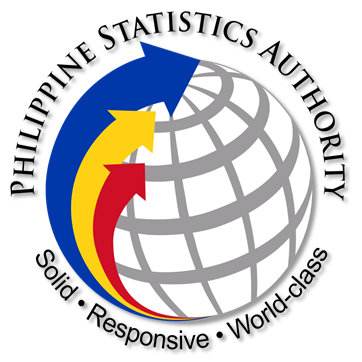The Philippines’ headline inflation rate slowed to 2.1% in February 2025, down from 2.9% in January 2025, according to the Philippine Statistics Authority (PSA). This brings the average inflation rate from January to February 2025 to 2.5%. In comparison, the inflation rate for February 2024 was higher at 3.4%. (Refer to Figure 1 and Tables A, B, 5, and 14).
Key Drivers Behind the Downward Inflation Trend
The decrease in overall inflation in February 2025 was primarily attributed to a slower increase in the prices of food and non-alcoholic beverages, which rose by 2.6% in February 2025, compared to 3.8% in January 2025. Additionally, the housing, water, electricity, gas, and other fuels sector experienced a slower annual increase of 1.6% in February, down from 2.2% in the previous month. Transport costs also contributed to the decline, recording an annual drop of 0.2% in February 2025, reversing the 1.1% increase seen in January.
Moreover, several other commodity groups showed lower annual increases in February 2025:
- Alcoholic beverages and tobacco: 3.4% from 3.5%
- Clothing and footwear: 2.1% from 2.3%
- Furnishings, household equipment, and routine household maintenance: 2.3% from 2.6%
- Health: 2.3% from 2.5%
- Restaurants and accommodation services: 2.8% from 3.2%
- Personal care, and miscellaneous goods and services: 2.6% from 2.8%
On the other hand, the information and communication sector saw a slight increase in its annual inflation, rising to 0.3% in February 2025 from 0.2% in January. The inflation rates for other commodity groups remained steady compared to the previous month.
Top Contributors to February 2025 Headline Inflation
The following three commodity groups were the primary contributors to the overall inflation rate in February 2025:
- Food and non-alcoholic beverages: 47.0% share or 1.0 percentage point
- Housing, water, electricity, gas, and other fuels: 16.4% share or 0.3 percentage point
- Restaurants and accommodation services: 12.9% share or 0.3 percentage point
Food Inflation
Food inflation at the national level eased to 2.6% in February 2025, down from 4.0% in January 2025. In February 2024, food inflation was higher at 4.8%.
Key Drivers Behind the Decline in Food Inflation
The slowdown in food inflation was primarily driven by a significant reduction in the annual inflation of vegetables, tubers, plantains, cooking bananas, and pulses, which dropped to 7.1% in February 2025 from 21.1% in January 2025. Rice inflation also decelerated, with a 4.9% decrease in February 2025, compared to a 2.3% drop in the previous month.
Other food items that saw lower inflation in February 2025 included:
- Corn: 0.7% from 3.6%
- Flour, bread, and other bakery products; pasta products; and cereals: 1.4% from 1.7%
- Fish and other seafood: 2.9% from 3.3%
- Ready-made food and other food products not classified elsewhere: 3.7% from 4.0%
- However, some food groups experienced higher inflation rates in February 2025:
- Meat and other parts of slaughtered land animals: 8.8% from 6.4%
- Milk, other dairy products, and eggs: 2.7% from 2.4%
- Oils and fats: 3.5% from 2.2%
- Fruits and nuts: 6.9% from 6.5%
Additionally, the annual decline in the sugar, confectionery, and desserts index slowed to 1.2% in February 2025, compared to a 2.3% drop in January.
Main Contributors to Food Inflation
Food inflation accounted for 43.4% or 0.9 percentage points of the overall inflation in February 2025. The top three food groups contributing to food inflation were:
- Meat and other parts of slaughtered land animals: 70.2% share or 1.8 percentage points
- Vegetables, tubers, plantains, cooking bananas, and pulses: 24.7% share or 0.6 percentage points
- Fish and other seafood: 20.4% share or 0.5 percentage points
Core Inflation
Core inflation, which excludes selected food and energy items, slowed to 2.4% in February 2025, down from 2.6% in January 2025. A year earlier, core inflation was higher at 3.6%.




